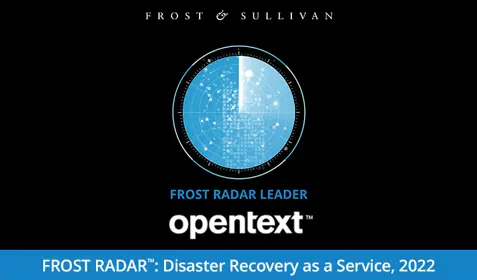The customer environments we encounter are as unique as the businesses that run them. That’s why Carbonite™ aims for a solution set that’s as flexible as the use cases we serve.
When it comes to their data backup solutions, admins should insist on flexibility in terms of deployment, backup configurations and recovery options. It may sound simple, but too many solutions take control out of the hands of those behind the glass. What’s left is a rigid product that’s difficult to manage in any other way than the one chosen by the vendor.
Flexibility in deployment
SaaS, public cloud, off-prem datacenter – there’s more than one way to store data and different reasons for opting for each. So, it’s important a backup vendor doesn’t employ a my-way-or-the-highway approach when it comes to deploying their services.
While it may seem like we’re living in an age dominated by cloud storage, the truth is there are still many organizations that are reluctant to give their data up to the either. These could be security, compliance or control, but it’s important vendors still cater to off-cloud preferences.
These software-only backup and recovery solutions allow for tailored data storage that are ideal for companies with in-house resources who want maximum control. What to replicate, to where and how often are completely up to the client. With this model, global corporations with obligations to replicate and store data within certain countries – an EU member nation, for example – can customize those details on their own.
On the opposite end of the spectrum, a full-SaaS, straight-to-the-cloud approach free organizations from much of the administrative burden of more involved backup and recovery approaches. Here, there are no satellite vaults, no hybrid configurations, just an hardware- free, all-out backup of the data owned by an organization that can be configured in just a handful of clicks. This approach is well-suited to organizations with limited IT resources that need streamlined management as well as an effective backup and recovery plan. It’s also particularly attractive in distributed environments like retail that may have hundreds of locations with a few devices at each to support.
As with other flexibility features covered here, these two approaches represent opposite extremes that are often blended into a unique offering that fits a clients’ specific needs.
Flexibility in backup configuration
Ideally, flexibility also extends to how backups themselves are configured. To again take opposite extremes, image-based backups are simple to configure and the right choice for many organizations. In just a few clicks, an admin can stipulate that a bare metal backup encompasses sequel transaction logs, image backups, VSS backups, etc.
This can be useful for managing a bank of sequel servers, where all need a simple and straightforward periodic snapshot of their contents. These image-level backups are typically performed daily when more frequent backups aren’t necessary.
Backup configurations can also be more granular, tuned to specific requirements of a business, an individual file on the C drive, under a specific username in a directory, for example. In heavily regulated environments like a banking, for instance, image-based backups may not best serve the needs of the client. Instead, they need multiple copies or snapshots of transactions throughout the day. This is common for backing up proprietary database solutions or if a single file has different retention requirements than others on the same system.
In this case, backups can be run every few hours so sequel databases and transaction are backed up multiple times per day, providing multiple recovery options for multiple points in time on a given day. Different backups—sequel servers can be rotated on a pre-determined cadence to minimize footprint and control costs.
Only backing up changes to datasets enables added flexibility here. If only 1Kb of data has been altered, it's simple to compress them, encrypt them and ship them to a backup location. This speeds up the process and makes multiple backups per-day a more feasible exercise.
Retention policies are another customizable feature organizations should consider based on resources, regulations and related factors. This is another area where industry-specific regulations may require a solution to offer admins control rather than pre-defined capabilities.
Flexibility in recovery
As we've seen, there are several options for structuring your backups. But it's how you recover them in a time of crisis that matters. That's why recovery is the final, crucial category for which we should consider flexibility. To again put things in terms of a spectrum, these options should include anything from file-specific recovery to bare-metal restoration and everything in between.
Restores should be able to happen from physical to virtual machines (P2V), VM to VM, physical to physical: “any-to-any” as it’s known in the business. They should also be system agnostic; able to go from Dell to HP, HP to Lenovo or any other combination called for in the moment.
When the time comes that a backup is desperately needed, the last thing a client needs is to be pigeonholed by how they can recover their data. If a salesperson leaves a laptop containing an important presentation at airport security en route to a major conference, for example, a physical-to-physical-only backup won’t cut it. Options are necessary to keep things on the rails.
It all comes down to options
Flexibility should be the backbone of any decent backup and recovery solution. Without, there are simply too many real-world scenarios that can effectively render it useless. When discussing such a solution with a vendor, it’s important to ask how about its approach to three areas in particular: deployment, backup configuration and recovery.
To discuss these topics with our sales engineers, reach out to us here.









